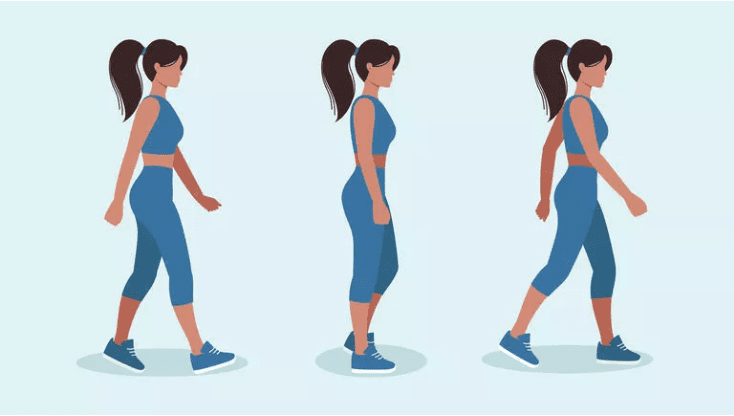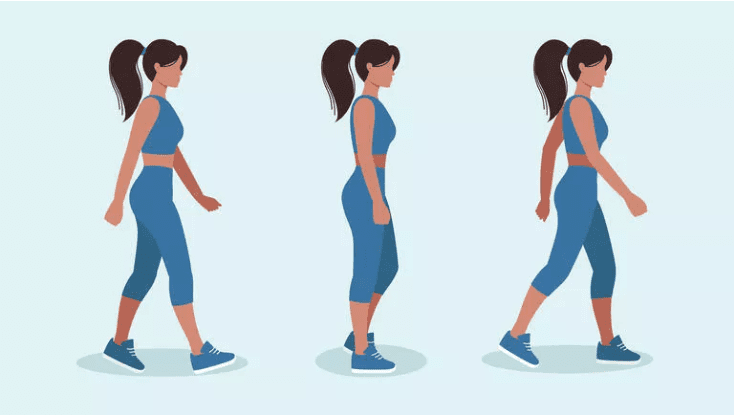According to a study conducted in the UK, lifelong brisk and fast walkers will be up to 16 years younger than their peers when they reach middle age.
Experts from the University of Leicester and the Centre for Biomedical Research in the UK have revealed that a faster pace of walking can make a person 16 years younger. According to the study, brisk and fast walking delays aging. The study finds that the bodies of those who walk fast will be biologically 16 years younger than those who walk slowly when they reach middle age.
The study looked at the chromosomes of each participant and, more specifically, the ends of chromosomes called telomeres. It was found that those who walked faster and briskly had longer telomere structures in chromosomes, so these people lived longer.
Telomeres are differentiated structures located at the ends of chromosomes. They consist of repeated the same short DNA sequence over and over again. Telomeres are shorter in the elderly because every time our cells divide to keep us young and healthy, telomeres are constantly shortened. In addition, stress, smoking, obesity, lack of exercise, poor eating habits also have negative effects on telomere length.

EXTEND YOUR TELOMER TO EXTEND YOUR LIFE
Telomeres are a clear sign of a person’s biological age. The longer a person’s telomere, the younger his body will be.
The research, the results of which were published in the journal Communications Biology, examined genetic data from the UK Biobank, a vast database of nearly half a million people (405,981 people) in their mid-50s with health information. These data were compared with measurements of walking speeds and intensity of movement taken from activity monitoring devices worn by the participants.
The researchers argue that a person who walks faster (about 5 km per hour) has longer telomeres compared to those who walk slowly when they reach the middle of life, suggesting that this is equivalent to being 16 years younger.
According to the research findings, the intensity of the activity provides more benefits than the total number of steps or walking time.
About half of the participants identified themselves as hikers at average speed. 41.1 percent believed that they were walking briskly. Only 6.6 percent of respondents said they walked very slowly.
Dr Paddy Dempsey from the University of Leicester, one of the authors of the study, said of the study:
“Previous research on the associations between walking speed, physical activity and telomere length has been limited by inconsistent findings and a lack of data. This research used genetic data to obtain a causal link between faster walking and longer telomeres, and to provide stronger evidence.”
Researchers from the University of Leicester have previously shown that just 10 minutes of brisk walking a day is associated with a longer life, and that those who walk fast can live up to 20 years longer than those who walk slowly.
Professor Tom Yates, lead author of the study, said: “While we have previously proven that walking speed has a strong link to health, we have not been able to confirm that brisk walking is better for our health. “In this study, we used information from people’s genetic profiles to show that walking faster, as measured by telomeres, is indeed likely to have a younger biological age.”
The World Health Organization (WHO) recommends a minimum of 30 minutes of moderate-intensity physical activity for adults, 5 days a week. According to the Mayo Clinic, the recommended daily walking time is 30 minutes. This time can also be done in the form of three 10-minute walks during the day.
Internal Medicine Specialist Dr. Meltem Batmacı states that the common conclusion from a wide range of studies conducted on very large groups at different times is that there is a decrease in the risk of premature death due to all causes (such as 19 to 33 percent) with moderate walking on a regular schedule.
Internal Medicine Specialist Dr. Aytaç Karadağ states that during walking with brisk and fast steps, we do not feel pain because our brain produces enkephalin, which is a natural painkiller, and that we feel better spiritually by secreting serotonin, which is the happiness hormone, and adds:
“We feel happier because our bodies produce dopamine, the natural pleasure hormone. In people who walk, sugar enters the cell more easily and begins to burn; in this way, we feel more fit. Since the sugar is burned, we balance our blood sugar, and we also prevent the sugar from being converted into fat and provide weight control.”
‘REGULAR WALKING IS THE BEST INVESTMENT IN OLD AGE’
Montenegro says that as evidenced by research to date, people who walk have a fitter immune system and are more resistant to infections, and sometimes they don’t even feel sick even though they get the virus. Walking on a straight path also strengthens the leg muscles; Stating that it prevents muscle wasting in old age, strengthens the knee ligaments and reduces bone resorption, Karadağ says, “Regular walking exercises are the best investment to be made in old age.”
Stating that the telomeres mentioned in the research are the gene sequences in the last part of the chromosomes that determine the viability and life span of the cell, and that one of the criteria of old age is the shortening of these telemorians, Karadağ explains this process with the following words:
“Before each cell division, these telomeres of ours begin to shorten. When it is too short to divide, cell death and old age occur. In this research, telomere shortening decreases in fast walkers; therefore, our life expectancy is prolonged as cell survival increases.”

IT’S NOT THE NUMBER OF STEPS THAT MATTERS’
But is the total number of steps, walking time, or the pace of walking more important for walking to be beneficial?
Montenegro replies to our question, “Actually, all of them,” adding. “Brisk walks of over 24 minutes produce the hormone leptin, which begins to burn fat. At the same time, brisk and regular walking has proven to be beneficial, so walking requires the highest pace and continuity that our body can tolerate. The number of steps is not important, and some studies even indicate that walking too much can be harmful. The number of steps each person may be different depending on their disease, age and gender.”
Baatmacı also states that the walk should be at a moderate pace and that the maximum heart rate is recommended to be in the range of 60-80 percent.
To find the maximum heart rate, you need to subtract your age from 220 and take 60 percent and 80 percent of the number you get. These two values give you the heart rate range you should reach during exercise. This is also the range that provides the best fat burning. A simpler way to decide the pace of your walk is the speaking test: When you walk at the appropriate pace, you should be able to speak in short sentences but not sing.
SOME MAY TAKE 6000 STEPS MORE
We often hear that 10,000 steps a day are needed to live a healthy life, but in recent years, scientists at Harvard University have shown that walking just 4,400 steps a day, instead of 10,000 steps, may be enough to protect against serious diseases. According to the study, it didn’t make a difference in terms of prolonging life after 7,500 steps.
Since gender, age and accompanying diseases are known to affect the number of steps, it would be more accurate to determine a number that will not force the body instead of a fixed number, Karadağ emphasizes that there was a campaign of 10,000 steps a day for a while, but that even 6,000 steps may be more for some and that it is necessary to individualize this number.
He emphasizes that the 10,000-step rule is a marketing strategy, that the benefit of exercise decreases after 7,500 steps, and that this has been adopted for years as a rule that has no scientific basis, and that 7,500 steps at a medium pace rather than 10,000 steps is more beneficial. Like Montenegro, Baatmaci says walking speed and distance should be adjusted to a person’s age, health status and physical characteristics.
Karadağ says that just as the universe has a balance, our body also has a balance, and diseases begin with the disruption of this balance, and that walking activity that puts too much strain on the body can put more strain on the kneecaps and cause calcification, meniscus tears and ligaments injury at an earlier age. Stating that it is not right to restrict people with sports predisposition to 7500 steps, Karadağ adds that each individual should find their own maximal walking step.


